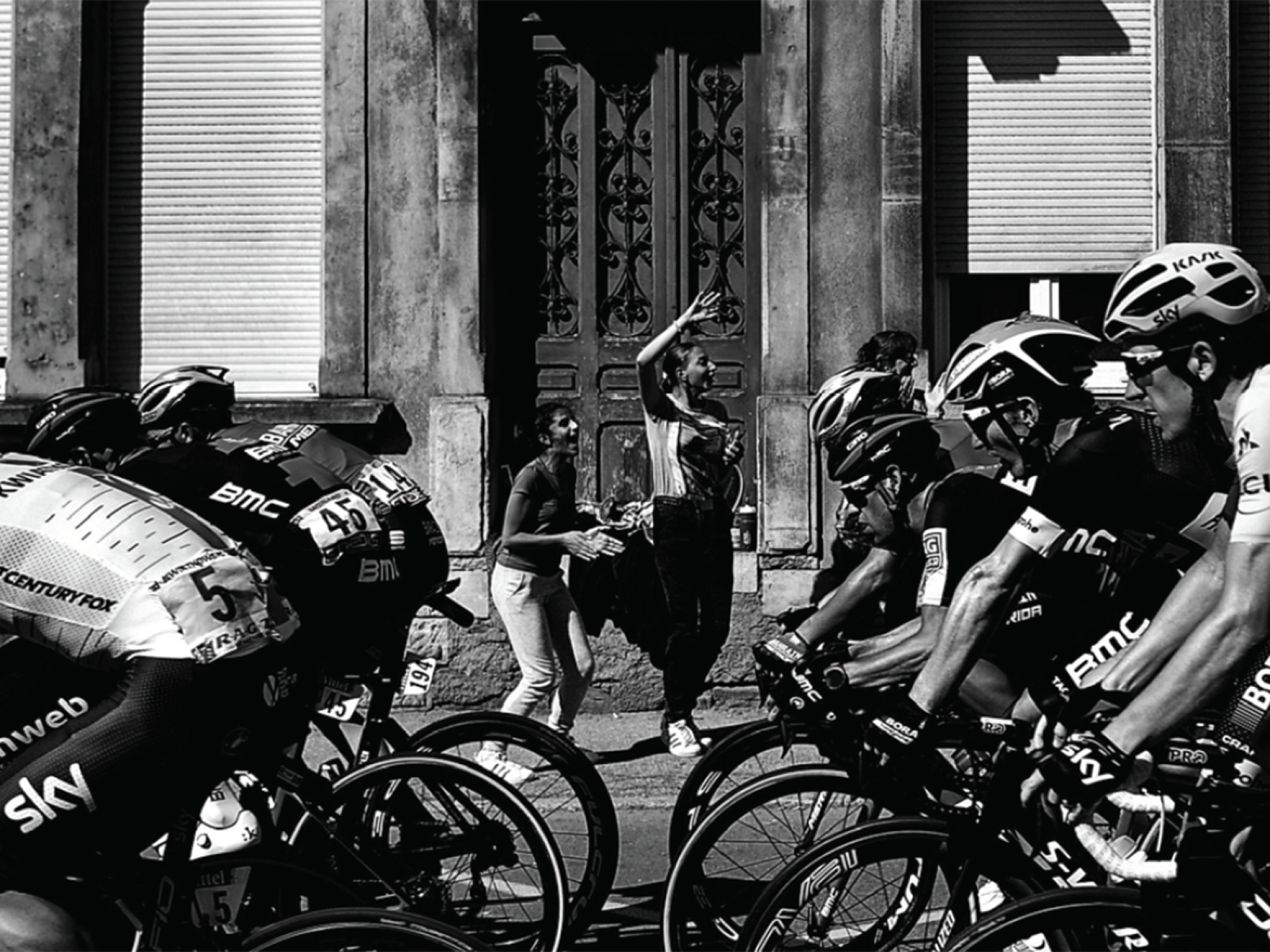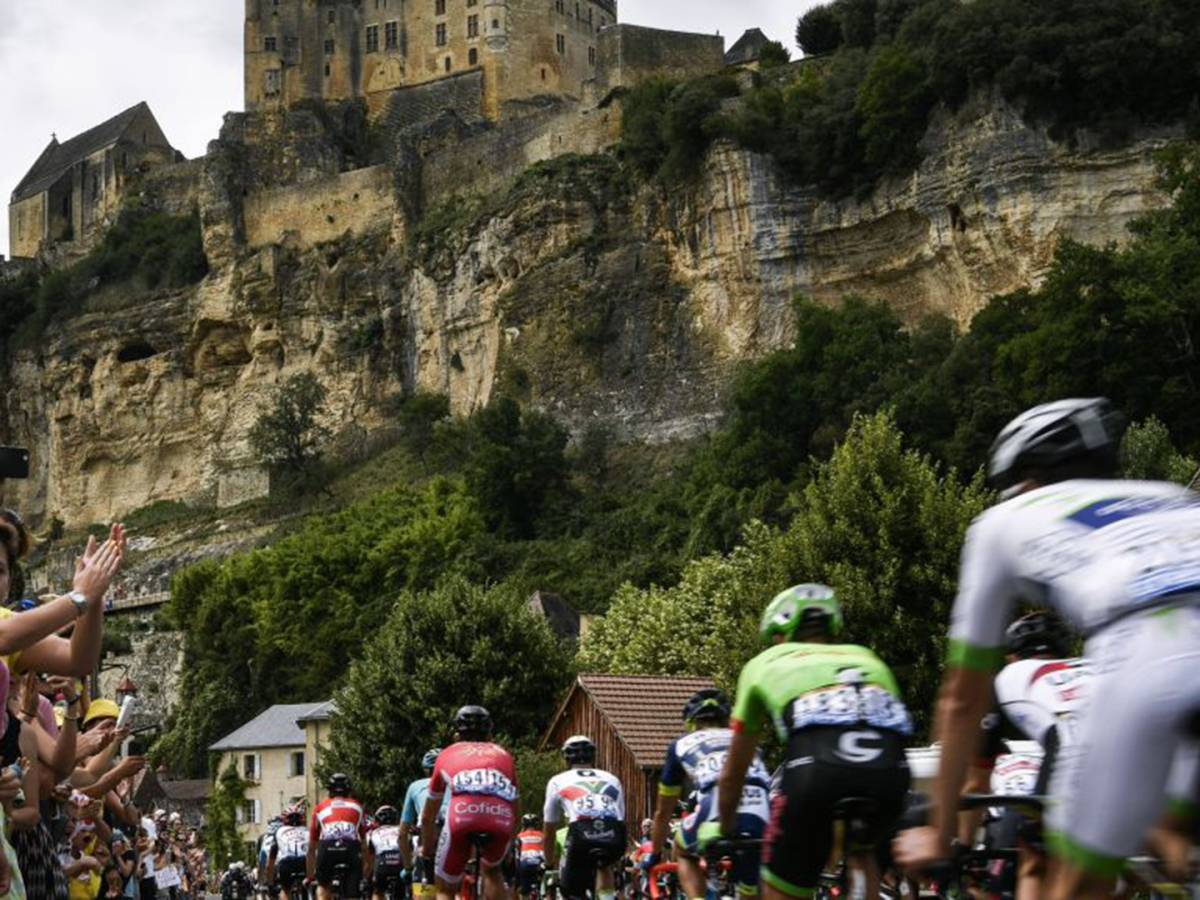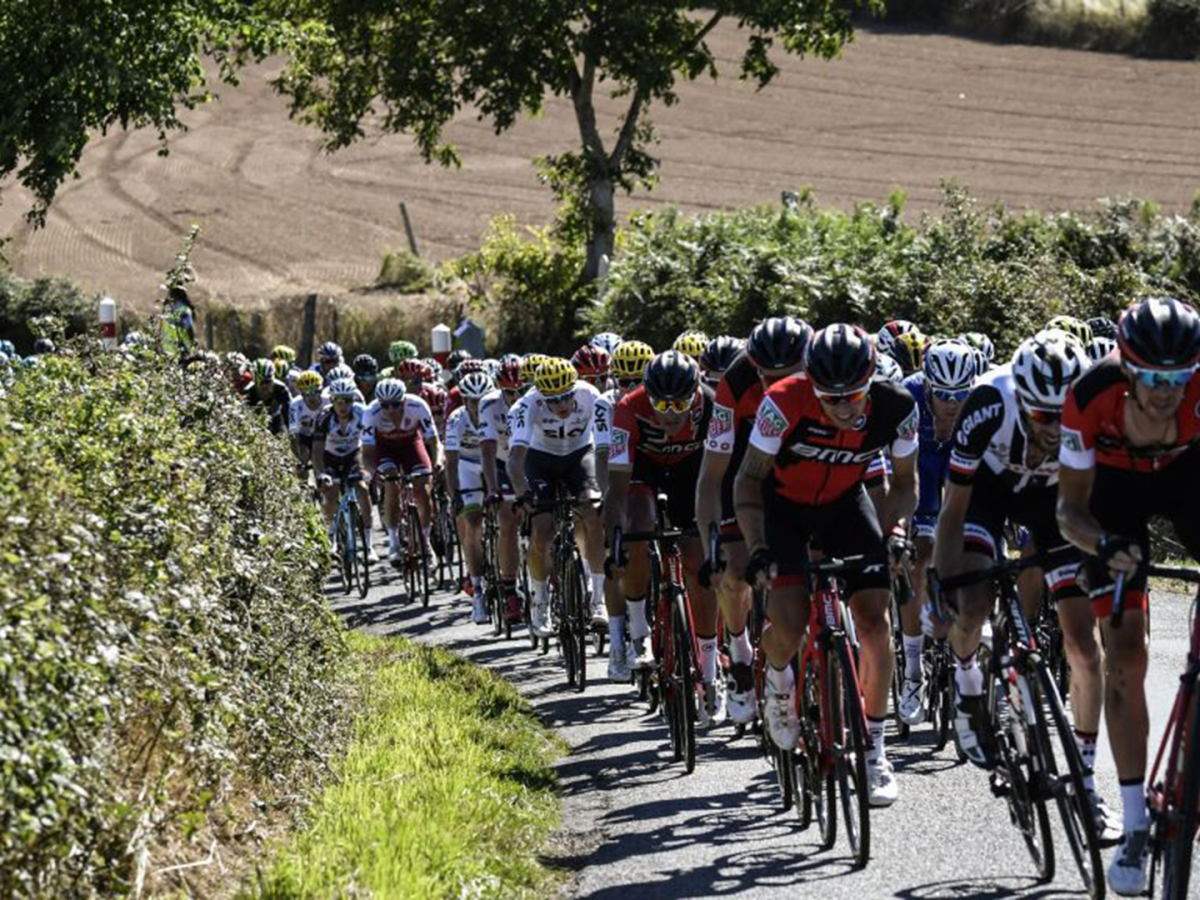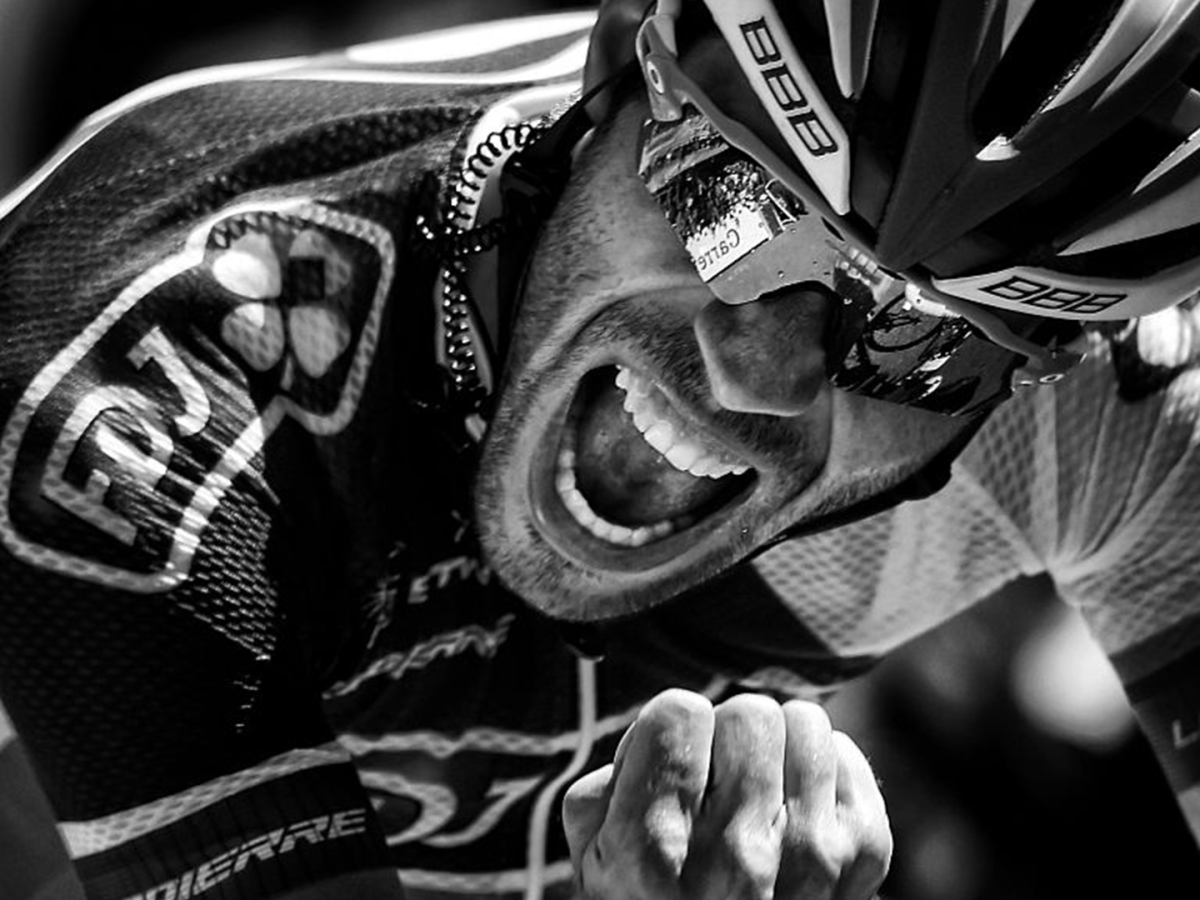April 18, 2018
Vive le Tour!

This article was originally published in Populous Magazine, our biannual publication featuring news, information, and trends from the worlds of sport, entertainment, and major public events. Find out more, and sign up to receive a free copy, here.
William Fotheringham, cycling columnist for UK newspaper The Guardian, has been following the Tour de France since 1990.
In this homage to the world’s largest annual sports event, he explains why the race is so emblematic of France as a whole.
One July lunchtime a few years ago, in a rural hamlet in Alsace, the villagers were preparing for the one cultural event that still brings them all together as a community.
Young and old, they were building stalls by the roadside to sell sausages and burgers. They were bringing out picnic tables and chairs. They were hanging bunting from the telegraph poles. Then came the piece de resistance: the local mayor drove his tractor out of his farmyard, with the loader bucket at the front full of glowing coals to heat a barbecue made from an old oil drum.
What set this scene apart, in cultural and sporting terms, was that it could have taken place in any French centre of population; in fact on any roadside that happened to be on the route of the Tour de France, during almost any July in the last 114 years. (Pedants would point out here that the Tour de France has only included a caravan of advertising vehicles since the 1930s but the basic principle still applies.)
The Tour de France, founded to offer a story line that would sell copies of the newspaper L’Auto, has provided an annual narrative for the nation’s summer every year since 1903, apart from during the two World Wars. In 1968, as the capital descended into chaos during student riots, the government deemed that the Tour should go ahead, in order to prove that life was carrying on as normal. It is a rite of passage now for the Président de la République to turn up in July and follow a stage alongside the race director, then wax lyrical for the media about “le fighting spirit” and “le fair play.”
The most popular Frenchman to ride the Tour, Raymond Poulidor, never actually won La Grande Boucle (as the French fondly call their race), but finished second several times in a career spanning almost 20 years. Nevertheless, Poupou, as he was nicknamed, has embedded himself in the nation’s consciousness to such an extent that he is now seen as an exemplar for valiant competition but with a lack of success. Indeed, the term, “a Poulidor of…” is used to refer to brave, popular but unsuccessful politicians or business leaders.
The Tour has developed enormously over the years. In the last half century it has grown from a parochial event with mainly French competitors and selected foreign teams to become a sporting behemoth whose horizons have expanded to the Americas, Australasia, Eastern Europe and, to a more limited extent, Africa. It is the world’s largest annual sporting event, overshadowed only by the Olympics and soccer’s World Cup. Its 2,500 miles are televised live in their entirety. Crowd figures are numbered in millions, and the TV audience in billions.
If the Tour has retained its place in French culture, that is mainly down to the quality that in turn makes road cycling races unique in general: these are events that travel to their public. Every community in France has been visited by the national race at least once, and many have been included in the route several times.
Road cycling is no longer the sport of the working man; it is too expensive and the small rural races that provided the bedrock of the sport are dying out. Yet the Tour still performs its basic function: it still goes out to its public. It is, wrote the British journalist Geoffrey Nicholson, the only form of international conflict that takes place on the doorstep other than actual war. Although, in many cases, spectators will travel to watch it, it is still viewed by hundreds of thousands of locals who step out of their front doors, set up those picnic tables, and wait for the pageant to unfold.
And while certain regions do receive preferential treatment (the Vendée, for example, has hosted the first stage several times in the last 20 years), the Tour makes a point of visiting every area of the country as the years go past.
It is no longer merely a sports event but a national institution, part of what the French call “la patrimoine”.
The route often visits key landmarks, celebrates historical occasions such as the D-Day landings or the signing of the Maastricht Treaty, and goes out of its way to visit the site of a natural disaster, or to tie itself to a major event such as the Olympics.
The Tour still performs its basic function: it still goes out to its public. It is the only form of international conflict that takes place on the doorstep other than actual war.
It is also nakedly, unashamedly protectionist.
As the sport has become increasingly international, the race’s organisers have fought their corner to ensure that the country’s professional cycling teams always have a chance to ride. A running battle has been fought with cycling’s international governing body (the Union Cycliste Internationale) over precisely who should have the final say on which teams take part in the race. The organisers have determinedly retained the right to select a certain number of French squads.
The upshot has been that, as cycling has declined in other European nations which were once its heartland – Italy and Spain in particular have been decimated – in France, at least, there is a disproportionately strong number of leading professional teams. That in turn guarantees that, while there are far fewer Frenchmen in the field than in, say, the 1970s, there are enough to provide the home TV stations with stars to focus on.
The race has even survived 20 years of doping scandals relatively unscathed, although fortunately the nation’s teams realised soon after the nightmare race of 1998 (when the leading team Festina was ejected and a whole system of organised doping came to light) that if they did not toe the line they would court disaster. Most of the French team directors opted for a choice they called “two-speed cycling”, where it was implicitly accepted that, by and large, the French wouldn’t dope. However, they knew that, as a consequence, they wouldn’t be able to compete with the likes of seven-times winner Lance Armstrong.
The one thing the Tour currently lacks is a French winner. As of 2017, the French have endured a 32-year drought. But as the sport has gradually cleaned up its act in recent years, they have edged closer to a win thanks to the likes of Romain Bardet and Thibaut Pinot; plus, as noted earlier, valiant battlers (or Poulidors) have always had a special place in the hearts of the French public and press.
Which takes us back to that little rural hamlet in Alsace. Unlike soccer or cricket fans in a stadium, those bystanders weren’t turning out to see sport as such. They didn’t care who won or lost. Like Britons flocking to a royal wedding, or Americans to a presidential inauguration, the villagers wanted to feel part of a greater occasion; a continuum going back a century and more, which had been watched avidly by their parents and grandparents. In other words, an event as much cultural as sporting.
Lorem ipsum dolor sit amet consectetur, adipisicing elit. Non facere corporis et expedita sit nam amet aut necessitatibus at dolore enim quis impedit eius libero, harum tempore laboriosam dolor cumque.
Lorem, ipsum dolor sit amet consectetur adipisicing elit. Illo temporibus vero veritatis eveniet, placeat dolorem sunt at provident tenetur omnis, dicta exercitationem. Expedita quod aspernatur molestias eum? Totam, incidunt quos.


